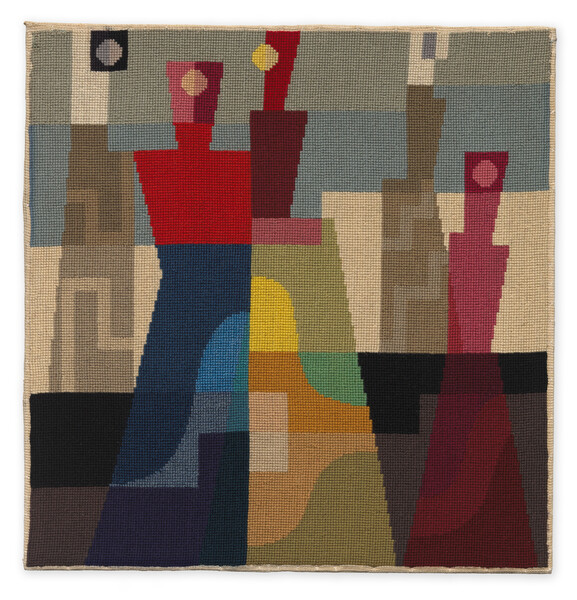Sophie Taeuber-Arp: Modern Master
Our film about the life and work of this master is narrated by Jennifer Higgie, editor-at-large of frieze magazine and host of Bow Down, a podcast about significant women from art history who deserve our attention.
From Dada to Geometric Abstraction, Sophie Taeuber-Arp’s radical approach to abstraction makes her one of the most important artists of the 20th-century avant-garde and a key figure in the history of modern art.
The Swiss artist’s vast scope and singular vision, multifaceted approach to media, and challenging of the traditional hierarchies between fine and applied art, were revolutionary and provide a framework for many contemporary artists working today.
Sophie Taeuber-Arp was born on 19 January 1889 in Davos, Switzerland. After studying textiles and dance, she immersed herself in modernism, moving fluidly between abstraction and figuration, fine art, design and applied arts. As a painter, a sculptor, a dancer, a designer and architect working throughout two world wars, she understood the infinite space of imagination as both protective and paramount.
In 1915, she met the Alsatian artist Hans Arp, and they became soulmates and collaborators in art and life. The couple were central to the development of Dada, which forged a unique creative language as a reaction against the senselessness of the war and as a way of exploding the boundaries of the traditional concept of art.

Sophie Taeuber-Arp, Café de l’ Aubette, Strasbourg, 1928 © Stiftung Arp e.V., Berlin/Rolandswerth. Photo: Othon Scholl

Sophie Taeuber-Arp and Hans Arp, Ascona 1925
In 1928, she designed the couple’s home and studio in Meudon, near Paris, loosely based on the tenants of Bauhaus, and created fully modular furniture with minimalist forms and coloured paint. The house was a meeting place for artists, writers and intellectuals—among them were Alexander Calder and Marcel Duchamp. Interior design became yet another component of her practice and she proved a remarkable dexterity with material in decorating and furnishing a cultural centre in the main square of Strasbourg—the Aubette—for the architect Paul Horn. In Sophie Taeuber-Arp’s works from 1937, she turned to the circle in wooden reliefs, and later focussed on the power of the line in a series of pencil and ink drawings on paper called ‘Construction géométrique (Geometric Construction)’. They were created only three weeks before her accidental death in January 1943.

Sophie Taeuber-Arp, Personnages (Figures), 1926 © Stiftung Arp e.V., Berlin/Rolandswerth

Sophie Taeuber-Arp, Envol (Flight), 1937 © Stiftung Arp e.V., Berlin/Rolandswerth
Her life and work are a great testament to the diversity of form and to the creative power of joy, concretized in her iconic Dada Head, or ‘Tête Dada’, (1920) and lived in her participation at Zurich’s Cabaret Voltaire or in performing Hugo Ball’s poem ‘Caravane’. Taeuber-Arp wrote to her goddaughter: ‘Something to which I attribute great value … is gaiety. It allows us to have no fear before the problems of life and to find a natural solution to them.’ – Explore our online exhibition ‘Sophie Taeuber-Arp’, a survey of the artist’s radical and multidisciplinary work from 1916 – 1942. Taeuber-Arp will be the subject of a major retrospective exhibition co-organized by The Museum of Modern Art, Kunstmuseum Basel, and Tate Modern. ‘Sophie Taeuber-Arp: Living Abstraction’ opens in March 2021 at Kunstmuseum Basel in Taeuber-Arp’s native Switzerland, and will subsequently be presented at Tate Modern in London, where it will be the first-ever survey of the artist’s work in the United Kingdom, and at MoMA in New York, the artist’s first major US exhibition in nearly 40 years. Jennifer Higgie is editor-at-large of frieze, and is based in London. She is the host of frieze’s podcast, Bow Down: Women in Art History. Her book ‘The Mirror and the Palette’ is forthcoming from Weidenfeld & Nicolson.
Related News
1 / 5




